15 November 2013
In response to great demand, we have decided to publish on our site the long and extraordinary interviews that appeared in the print magazine from 2009 to 2011. Forty gripping conversations with the protagonists of contemporary art, design and architecture. Once a week, an appointment not to be missed. A real treat. Today it’s Thiago Rocha Pitta’s turn.
Klat #02, fall 2010.
Thiago and I are more or less the same age (he’s just two years older than me), we live at the distance of a ten-hour plane flight (Milan-São Paulo) and we have never actually met. We speak, right from the first moment, a spontaneous and hybrid language: an English used as a Charon between my Italian and his Portuguese. We communicate through the syncopated code of Skype, which breaks in at home and the office with the intermittence of a verbal cut and thrust, and through the relaxed rhythm of email which, on the contrary, offers a space for conversation that is more like a long parenthesis or a box in which thought is able to stretch out and reach as far as it can. What came out was a good chat. Here it is, an exclusive for Klat!
How did you get involved with art?
My father, Fernando Pitta, was an artist, and so I practically grew up in a studio. He taught me and my brothers to draw even before we could read and write. In addition, we lived in a small baroque city, full of churches and monuments, surrounded by beautiful mountains…
Do you believe that being an artist is a condition linked to destiny, to something that is written in a person’s DNA?
No, I think it is the environment that shapes our character and our destiny.
Nature dominates in your work. How do you see and live the relationship between nature and culture?
That depends on what you mean by nature and what you are referring to when you speak of culture. For me everything is culture, including nature. Primary elements like water or rocks are rich in content, in symbolic meanings: if you take them out of their original context and introduce them into what we call a “work of art,” they cannot be considered natural. In the same way, an object as banal as a urinal ceases to be such if it’s used by Marcel Duchamp. Culture, in a certain sense, appropriates nature, transforming it. A “cultural” object is just a “cooked” object. And so, before responding to your question, I’d like to ask you one. Would you ever ask a cook if nature is the dominant ingredient of his work? I don’t think so, and yet without the animal or vegetable products provided by nature he wouldn’t be able to work. I believe that it’s the way you do “the cooking” that makes the difference, rather than the thing that is “to be cooked.” However, to answer your question, I live in a constant state of confusion between nature and culture.
As a European I detect a distinctly “Brazilian” character in your works. It’s a sensation that’s hard to explain. It has something to do with an anthropological heritage, I think. How much is your country part of you?
I can’t say with precision in what this character consists and if I could I would avoid defining it… I love Brazil, but not for its politics, the institutions of its government. I am a child of Brazil, of this land, of my ancestors, and I’m the product of the strange culture that has developed since the time when this place was invented.
Do you feel close to other artists of your generation working in Rio de Janeiro? Whom do you mix with?
I can’t say. There are some artists I feel close to, I’m thinking of Marilá Dardot, Cinthia Marcelle and Sara Ramo, but they come from Belo Horizonte… My background is too different from that of the artists of Rio. I was born and raised in the countryside and I received an artistic education at home, while most of them have always lived in the big city and attended certain schools. Let’s be clear, I love big cities. I adore living in a metropolis like São Paulo, where I moved about a year ago. My imagery, though, has nothing to do with urban culture. Moreover, I like to experience art in solitude, both as an artist and as an observer.
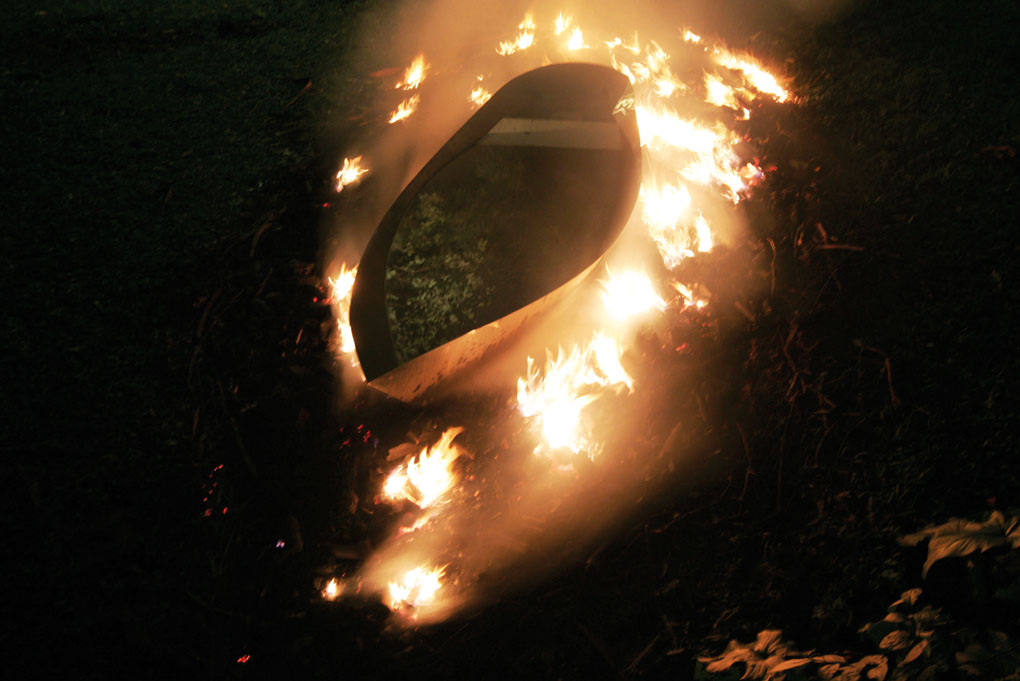
Thiago Rocha Pitta, Youth, 2006. Courtesy: Thiago Rocha Pitta. Photo: Alyssa Miserendino.
Where ought I to expect to meet you in Rio?
You could easily find me in Santa Teresa, the district where I used to live…
And in chaotic São Paulo?
In my studio or at home. Or perhaps out somewhere to eat.
Describe your studio.
It’s a simple space, with a table and a few objects lying around. Nothing special.
What’s your typical day like? Do you have a hobby?
Getting up, eating, working, going home, sleeping…
Have you ever thought about going to live abroad? What are your ambitions for the future?
My wife is pregnant, I’m working on a lot of things, I have some exhibitions to prepare… but the prospect of becoming a father is what fascinates me most. I’m enchanted by the idea of rediscovering my childhood by watching my child grow up.
Eternal and primordial elements like earth, water, air and fire recur in your work. The most original art is the one that is able to stir strong emotions using very familiar, elementary materials.
Perhaps these elements are not eternal in themselves, but the movement and cycles in which they are involved are. Making these elements relevant, bringing them into the foreground, is like surrendering to a perpetual, unstable motion: it’s like having a close encounter with this permanent motion.
What does the fossil represent in your works? I’m thinking of Fossil Rain, of the temporal paintings, of Fossil Cinema…
The fossil is an impression of the past. Culture does something of the same kind with mummification. Fossil Rain is the picture of a rock that has been subjected to the action of many downpours. Looking at the colored stripes on the rock, you can note the various passages of the water over its surface. The stripes represent deposited, calcified time. With the temporal paintings, on the other hand, I have tried to bring painting close to landscape, using the atmospheric phenomenon of rain to spread the pigments on the canvas. Fossil Rain was a sort of model for these works. Fossil Cinema, instead, is fossil light. The sun has been supplying us with energy since time immemorial: one part of it is condensed in organic structures, the other is fossilized and we find it in oil, which derives from natural subterranean deposits of carbon and hydrogen, and in coal. We use the energy of a fossil universe. When I look at the light of burning coals it is as if I were looking at the light of the sun.
Rocks, light, fossils, flames: these images make me think of a nostalgia for something lost.
Perhaps there is yearning for a completeness, for a lost totality, a unity that has now been destroyed.
Youth, 2006. Could we say that it represents the slow and inexorable passage to adulthood? How much of the autobiographical is there in this work? The reference to Conrad’s The Shadow Line seems inevitable.
Joseph Conrad had a sort of obsession with the passage from youth to adulthood, and this is evident in The Shadow Line, just as in other books of his. So your reflection is correct, but if you had asked me the same question four years ago, in 2006, when I made Youth, I might have said no, because I was resisting the idea of growing up. But today it’s different… In any case, Youth is also the title of one of Conrad’s short stories: it’s the account of a young sailor’s first journey to the East, the first official voyage of an old and damaged vessel that is transporting a cargo of coal. The plot can be divided into two parts. In the first, the ship is almost sunk by a great storm. In the second, it catches fire. Almost as if he wanted to establish a complementary relationship between water and fire. The young captain lives in a constant state of excitement and wonder, notwithstanding the danger and the catastrophic sequence of events that he has to face. This youthful propensity for wonder is the principal characteristic of Conrad’s story. But going back to my Youth… The idea came out of an earlier video of 2002, Homage to JMW Turner, which presented a small wooden boat in flames, drifting in the sea. After shooting it, I started to think about its structure and found a certain analogy with cooking. The food we prepare is usually cooked in a pot, with water or oil. I associated the boat with the pot, and began to plan and make Youth. I designed the vessel and built it out of stainless steel, the typical material of cooking pots. Then I filled it with water and put coal under and around the boat. In the end I lit the fire…
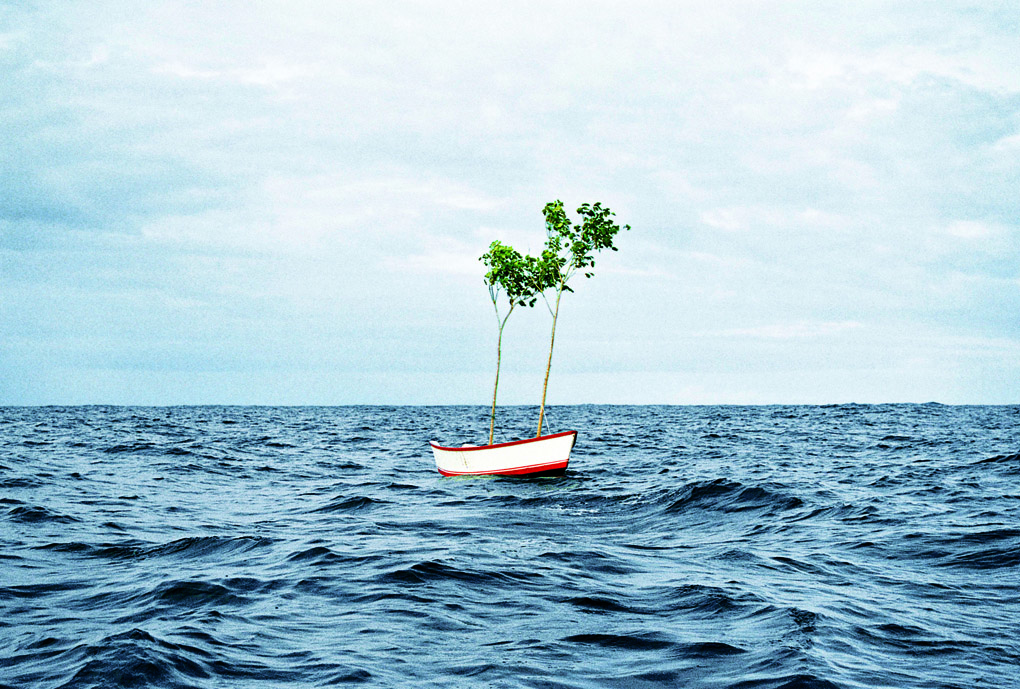
Thiago Rocha Pitta, Heritage, 2007. Courtesy: Thiago Rocha Pitta. Photo: Paula Dager.
What’s your relationship with the history of art? In Homage to JMW Turner, in 2002, you paid tribute to the English painter William Turner. Five years later, in 2007, you made another video with a significant title: Heritage.
Homage to JMW Turner was my first video and one of my first works in general. I don’t recall having worked it out in a profound way when I thought of it. I had that idea of the boat burning and I remembered Turner’s famous painting Peace-Burial at Sea. So I decided to pay homage to him. The video is very simple, and it’s from there that all the other boats I’ve created and destroyed come. When I finished shooting it, I showed it to my father and he liked it a lot. He asked me to help him make a video, because he had an idea very like my Homage in his head. I told him okay, let’s try. But the project was shelved, in part because my father had always been an artist attached to working in the studio, and less to “outdoor” experiences. In 2006, after his death, while I was reorganizing the files in his studio, I came across some sketches that represented that idea: a boat, with a tree in it, in the middle of the sea. I decided to make it myself, with a few variations, as a homage to my father: Heritage.
Staying with homages and origins, land art is a practice present in many of your interventions, as is arte povera in your use of simple and organic materials.
I’m a very great admirer of land art and arte povera and it’s very hard for me to place my work outside the course they have laid down, but I also find it difficult to make a real comparison with two such important movements. In any case, the one I feel closest to, the one with which I identify culturally, is arte povera.
Who do you see as having been a true artist?
Robert Smithson.
Representing time. Humanity tries in vain to freeze it in an image or a video. What is your perception of time?
I think that our perception of time is faster than its hypothetical objective duration. I made a video that in a way holds a dialogue with this question. It’s called Aerial bridge with highway time or addressless love letter. I filmed from the window of the plane a flight from Rio to São Paulo that lasts fifty minutes, then I extended its length to four hours.
You’ve experimented with various media: video, photography, painting, sculpture, installation. Which has best met your needs?
I don’t know how to answer that. The most important thing for me is the poetics of each individual work. It doesn’t matter whether it’s a book, a song, a drawing, a film, a photograph, an installation, etc. It’s the poetics that make the difference, not the medium.
Your favorite music?
I would say that of Dorival Caymmi.
Art and the market. Can art exist outside the galleries? What is the market for you? In Brazil you’re represented by the Galeria Millan in São Paulo and by A Gentil Carioca in Rio, which is known for its cutting-edge approach: two different slants.
Art can be anywhere, the market is just the place where things are bought and sold. Galeria Millan and A Gentil Carioca are very different, but they share many good points. At both I find a high degree of professionalism and we are great friends. They respect each other a lot and they can end up collaborating instead of competing. Very lucky for me.
You also have a gallery in Europe, Andersen’s Contemporary in Copenhagen, where you held your solo exhibition Inland Shipwreck in 2008.
On that occasion I used the same boat as in the video Heritage, a sort of twin. In the 2007 video the craft floats with two trees inside it, like a sort of floating island, while in Inland Shipwreck the same boat sinks into itself until it vanishes. I showed the two videos in two symmetrical rooms, located behind the wall on which the large canvas Project for a Stormy Weather Painting was hung. In the same room there was also a photograph from the Fossil Rain series. The sound of the sea coming from Heritage was mixed with that of the earth that covered the boat in Inland Shipwreck. The exhibition was a reflection on the movement of the earth, on its perpetual motion: an exceptional condition of which we are not even aware. There were some watercolors too: I had painted some sailing boats as if they were stones. In The Shadow Line there is a scene in which the captain sees his own ship, motionless owing to a prolonged period of calm, “as a model ship set on the gleams and shadows of polished marble.” A ship of stone, a dimension in which it “was impossible to distinguish land from water.”
What kind of relationship do you have with collectors?
The best possible!
And with curators? Is there anyone who has helped you in particular or whom you’d like to deal with?
I don’t have a special relationship with any of them. I just try to be professional and I expect the same from the other party.
Your most recent solo exhibition in Europe was at Meyer Riegger in Karlsruhe, in 2009: A Rocky Mist. Another experience in the guise of an artist-alchemist…
Yes. The exhibition was basically constructed around two pieces: the sculpture A Rocky Mist and the watercolor The bird in the fog. A Rocky Mist was the fruit of an elaboration of my previous experiments with salt and its crystallization. I’m fascinated by the mutable nature of salt. Salt comes from the erosion of mountains. It has a solid origin, but then it is dispersed in the sea and becomes fluid. Salt has an effect on water: it makes it less liquid, it conserves it, by preventing the sea from evaporating. The work was presented as a small pool filled with salty water. I set four parallel panes of glass on the surface, vertically, which I had treated with salt crystals to give them the shape of mountains. What happened inside this microcosm was very interesting: the crystals absorbed the salt with which the water was saturated, and as a consequence the profiles of the mountains changed, turning them into a white and solid cloud, a “rocky mist.”
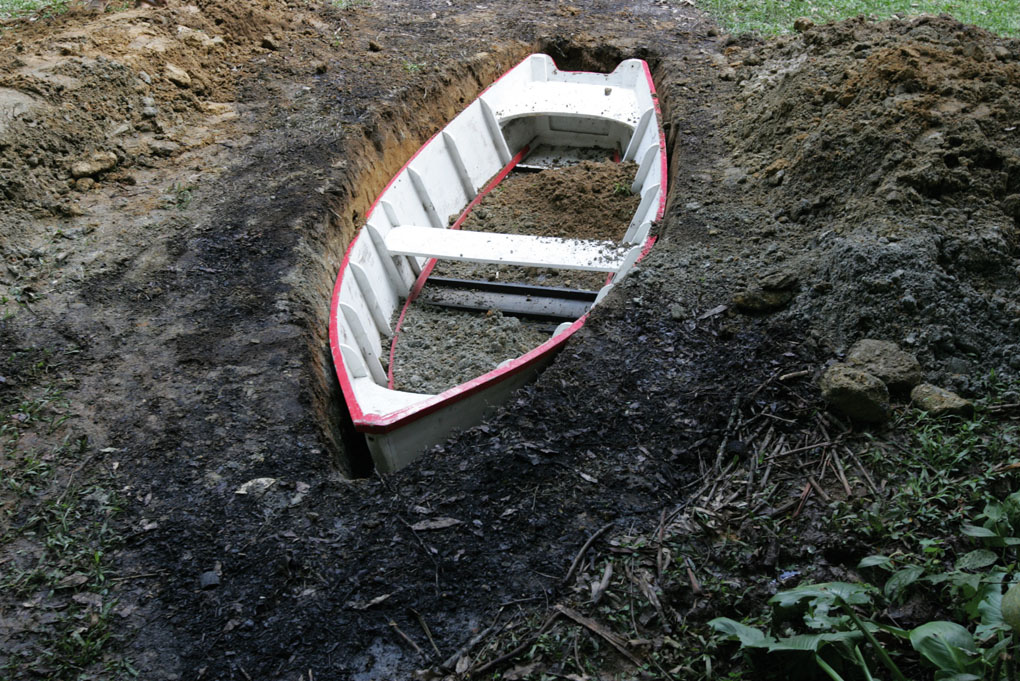
Thiago Rocha Pitta, Inland Shipwreck, 2008. Courtesy: Thiago Rocha Pitta. Photo: Alyssa Miserendino.
In July you worked on a large installation at the Escola de Artes Visuais do Parque Lage in Rio de Janeiro and in September you opened Precipitações sedimentárias, your latest solo exhibition at A Gentil Carioca. Tell me something about them.
At the school in Rio I produced a daily photographic documentation of my intervention. Every day, changes took place right in front of my eyes. The large canvas on which I had scattered iron filings, Temporal Painting #5, altered in an evident way in contact with the damp. A process that was accelerated by the presence of a low basin filled with water (which was part of the work), creating a sort of gigantic watercolor. The idea of “drawing” a cloud of iron (Iron Cloud/Oxide Rain) on the wall of A Gentil Carioca was the fruit of a reflection on time and space. I never cease to be spellbound by the creativity and power of nature and its metamorphoses.
What do you believe in?
In really a lot of things…
What recurs in your dreams?
A farm and a sailing boat.
What is art?
Art is make-believe and we can do what we want, while the same is not true for life, where we have to be more responsible.
What’s the question you most often ask yourself?
I’m not going to tell you…
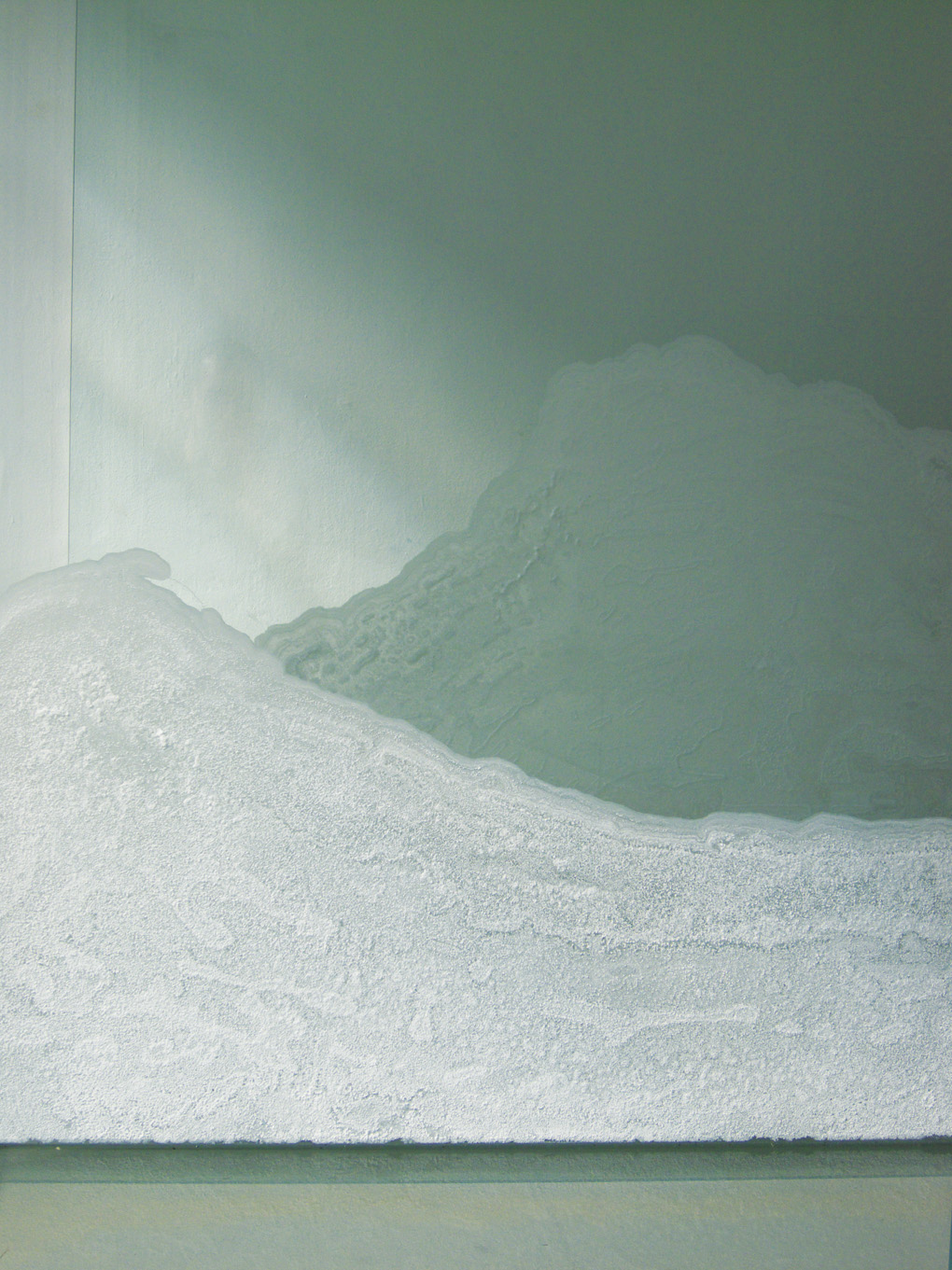
Thiago Rocha Pitta, A Rocky Mist, 2009. Photo & courtesy: Thiago Rocha Pitta.
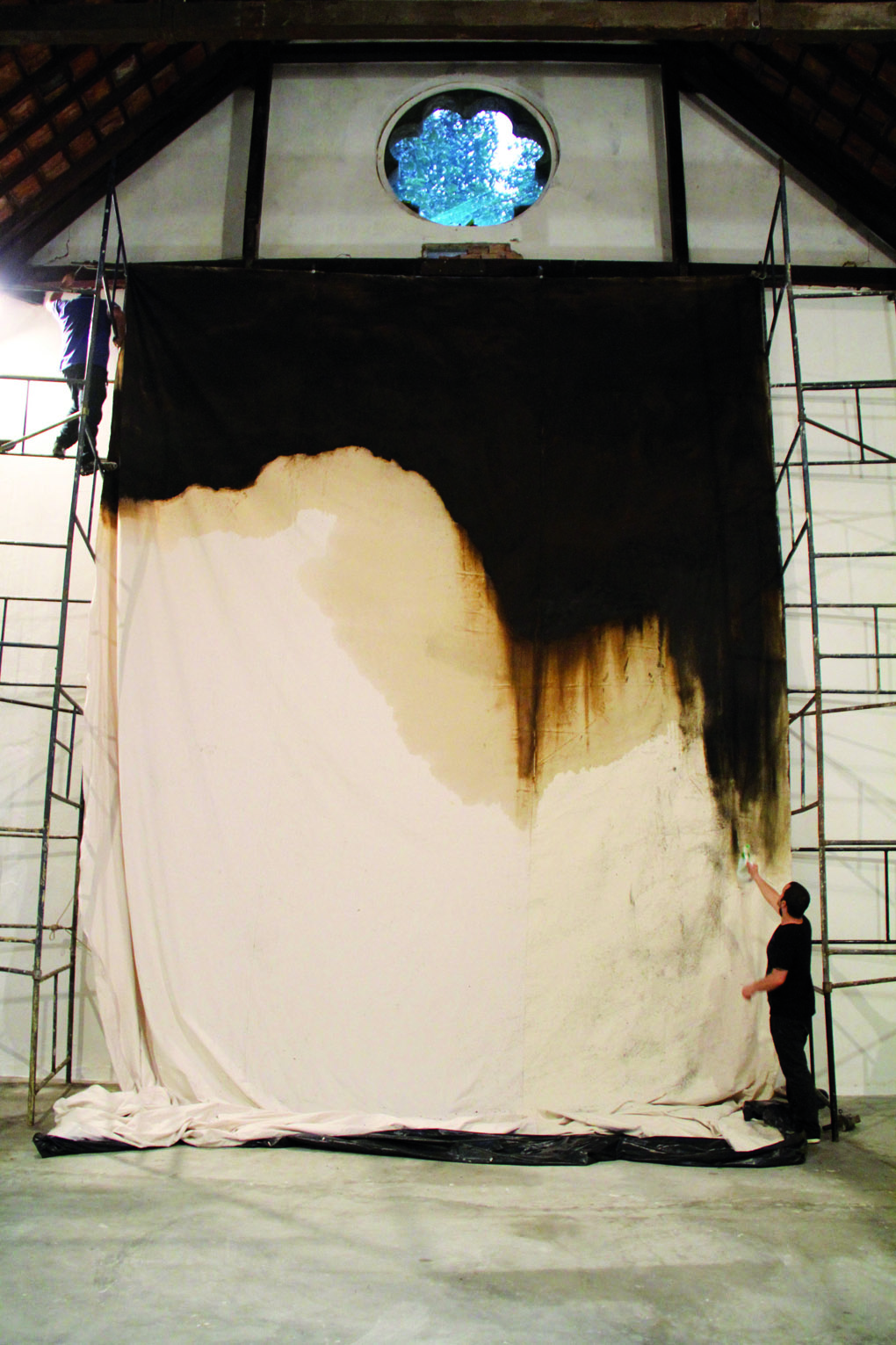
Thiago Rocha Pitta, Com Temporal Painting, 2010. Photo: Thiago Rocha Pitta
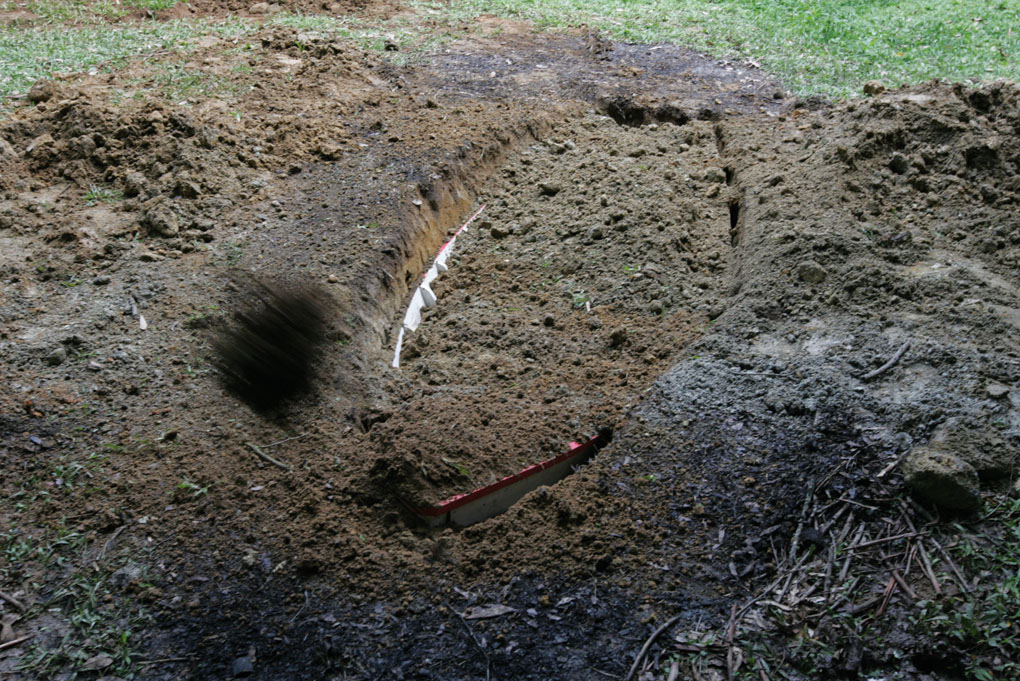
Thiago Rocha Pitta, Inland Shipwreck, 2008. Courtesy: Thiago Rocha Pitta. Photo: Alyssa Miserendino.